35 Essential Woodworking Tools – Must-Have Basic Woodworking Tools
Essential woodworking tools are integral to woodworking projects, they include saws, chisels, planes, and more, enabling precise shaping and crafting of wood. These tools are fundamental in various woodworking tasks, from carving to joinery, and play a pivotal role in woodworking and carpentry. Woodworking is labor intensive, and without the right tools or components, it […]

Essential woodworking tools are integral to woodworking projects, they include saws, chisels, planes, and more, enabling precise shaping and crafting of wood. These tools are fundamental in various woodworking tasks, from carving to joinery, and play a pivotal role in woodworking and carpentry.
Woodworking is labor intensive, and without the right tools or components, it will be challenging to complete your projects. Moreover, to leave a mark and design unique furniture or effectively attach different materials, you must create a sturdy construction.
For that, you need to know about the best tools, and this guide shortlists 35 essential woodworking tools you should have in the workspace. With these, you can undertake and complete any task without difficulty.
1. Circular Saw
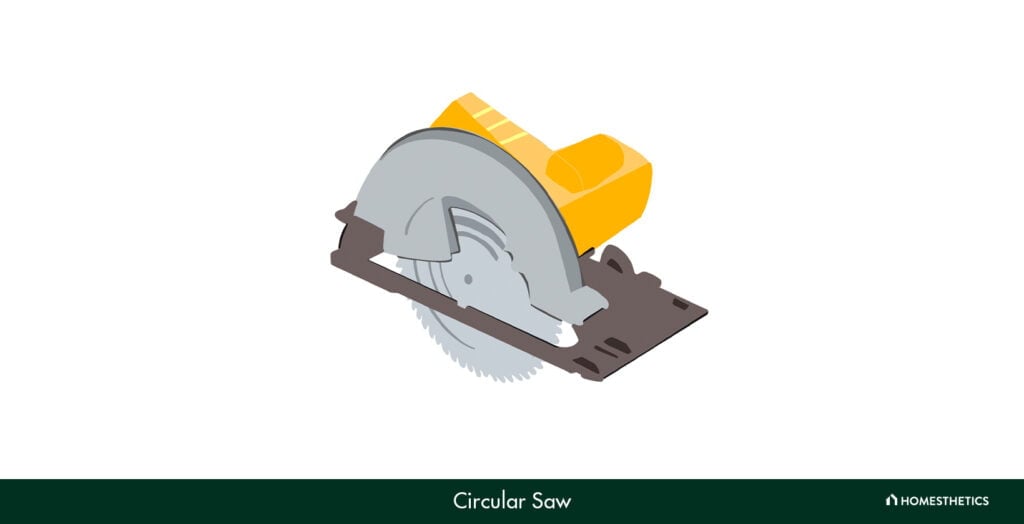
From experience, I can tell you that using different power tools for various woodworking projects is challenging. So, if you need to cut wood, plastic, masonry, metal, or other materials, it would be best to use a circular saw.
While a circular saw refers mostly to hand tools, even a table or chop saw is categorized under circular saws. In fact, this is one of the most common woodworking tools, ideal for DIY purposes and professional use, thanks to the sharp teeth supported by a round metal blade edge.
2. Table Saws

Another woodworking tool that most people use is the table saw to make cross or rip cuts. Cross-cuts involve cutting across the wood grain, while rip cuts ensure you cut with the wood grain.
Unlike basic woodworking tools with no adjustable features, you can change the angle and height of the blade to cut by pushing the stock into the blade. These units also have a guide called a fence, helping you get a straight cut by staying parallel to the blade.
3. Miter Saw
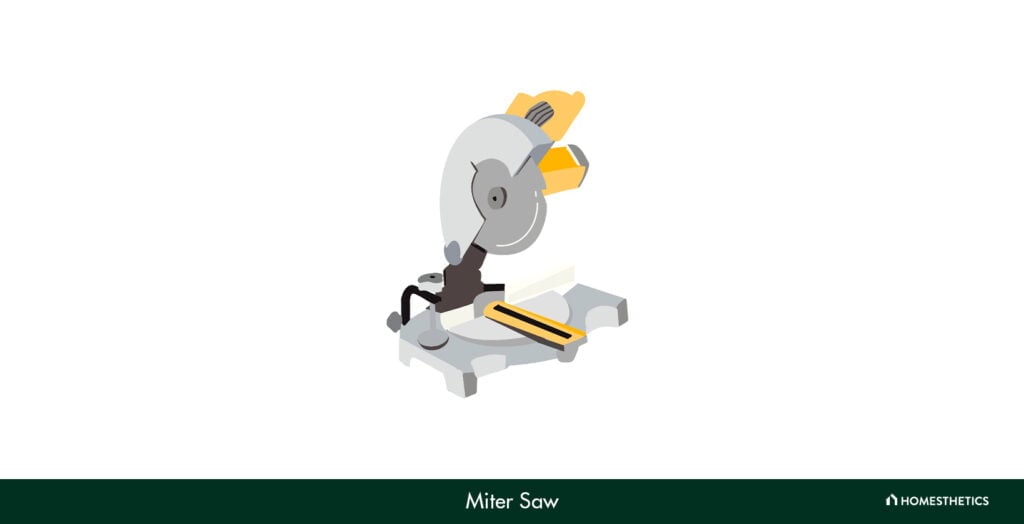
Miter saws are one the essential power tools for a woodworking project since you can make angled cuts for several purposes, including trim work, molding, or rafters. You can even make straight cross-cuts, but to get the most out of this tool, attaching the right blade is critical.
It’s the perfect tool for DIYers and professional carpenters, given that it is highly accurate. Apart from cross and angle cuts, you can make angled compound cuts, which makes them an indispensable tool.
4. Tape Measure

A simple yet necessary addition to your woodworking shop is a tape measure. It’s a handy tool that helps measure size and distance for accurate cutting to help a professional or a beginner woodworker.
Most units comprise a case, blade/tape, thumb lock, hook, or belt clip and are made of cloth, fiberglass, plastic, strip, and metal ribbon. Usually, the measurements are available in inches and centimeters for greater precision on multiple projects.
5. Random Orbital Sander
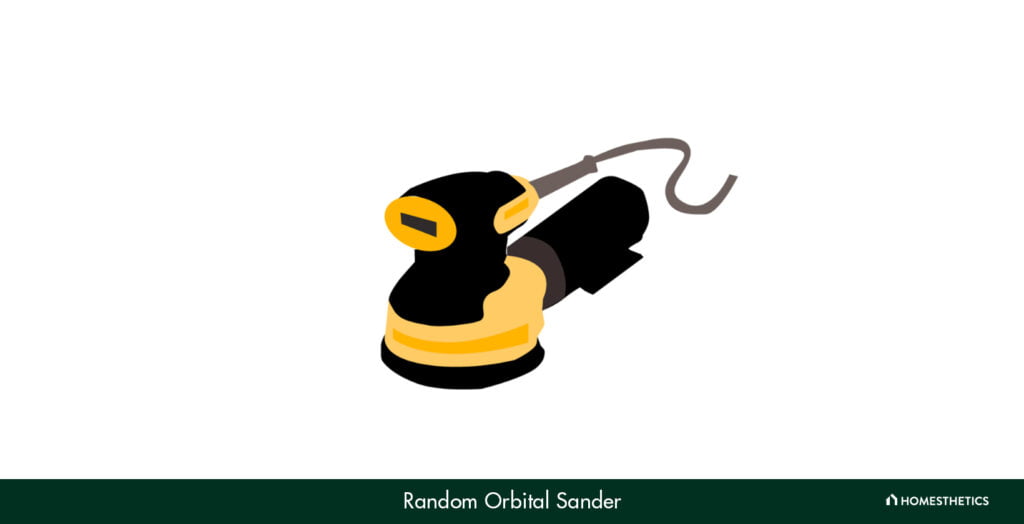
Drawing from experience and having worked on plastic, wood, and metal, I can assure you that the orbital sander is the go-to option for getting an ultra-smooth texture on any surface. But more than a smooth finish, you can use an orbital sander for removing varnish, polyurethane, stain, and paint.
You can use it to get several types of refinishing on a wood surface, with the option of using a random orbital sander. The only difference is that a random sander has a random orbit action, running in irregular but overlapping circles.
6. Hand Saws
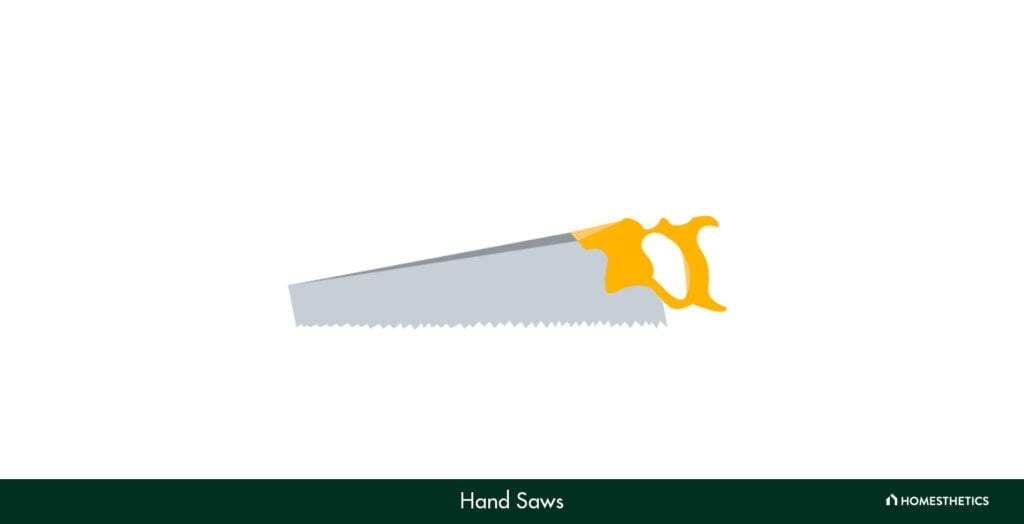
The best tool to cut wood pieces into various shapes is a hand saw, also called panel saws. You can attach wood joints and pieces together with a hand saw or carve a wooden object.
A hand saw offers more control and greater precision while working than corded tools. Best of all, while trying it out in person, I found that a hand saw guaranteed improved coordination that isn’t possible with other tools.
Most professionals prefer a hand saw because it’s inexpensive, easily portable, and good for use on delicate materials.
7. Electric Drill
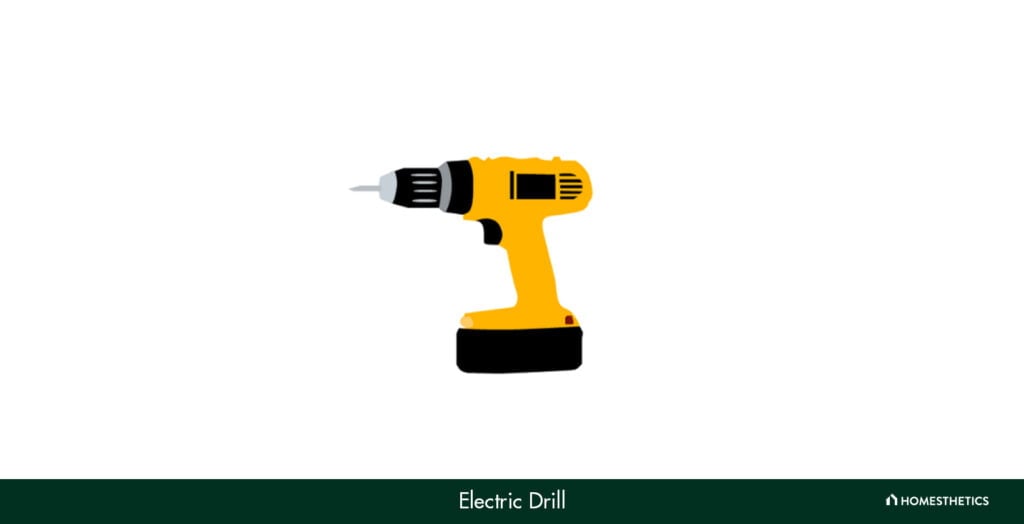
There is no rocket science behind using an electric drill, as this power tool is used for drilling holes in the material, which helps insert screws or other threaded fasteners into the surface. You can get an electric drill in impact-driver configuration, ensuring the high-torque tool will help tighten nuts or drive screws.
It is one of the only hand tools widely applied in multiple industries, like metallurgy, manufacturing, masonry, woodworking, and construction. Moreover, you can employ an electric drill for countersinking, tapping wood joints, reaming, spot facing, or counter boring.
8. Power Drills
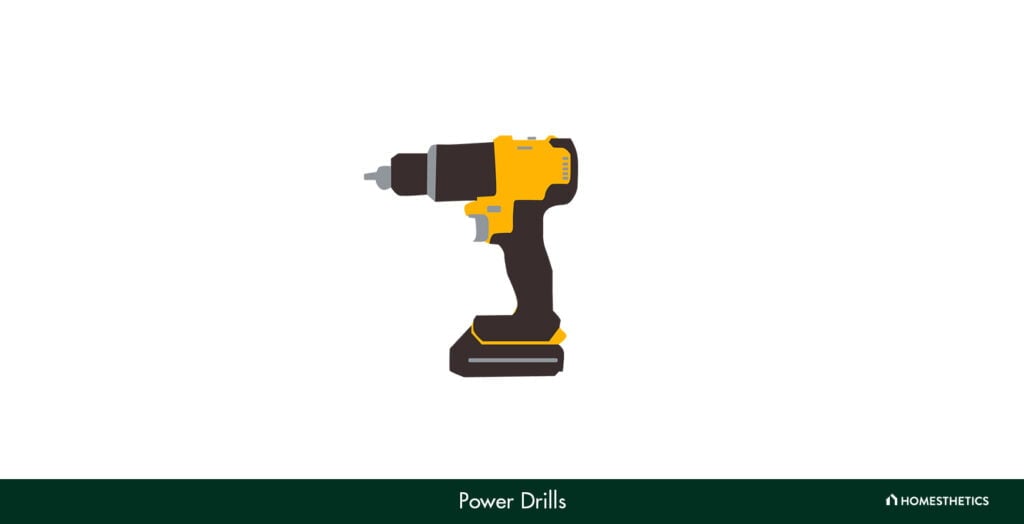
If you need something more efficient for woodworking projects, try using a power drill instead of a screwdriver. You can use a power drill with a drill bit to increase the effectiveness of this rotating cutting tool and make holes.
The best part is these tools can also rotate counterclockwise, which allows you to remove tight screws. Most power drills come with a high-output electric battery and are available as corded and cordless power drills.
I prefer using cordless drills because there are no wires, so they are easily portable and maneuverable. Meanwhile, a corded power drill must be plugged into a 110V outlet, proving lighter and more compact.
9. Marking Knife

Whether you are a professional or a beginning woodworker, it’s vital to make accurate measurements for all woodworking projects. This is where a marking knife, also referred to as a striking knife, comes in handy since it acts as a layout tool for making pieces of wood.
In other words, the marking knife is used to cut/draw a line on the surface of the material, over which you can run the hand saw, plane, or chisel. Thus, it’s especially useful for woodworking beginners and comes with a single bevel.
10. Sliding Miter

A sliding compound miter saw or sliding miter helps cut moldings, wood trim, plastic, metal, and masonry. The trick is using the right blade to ensure you can make angled or straight cross-cuts.
Having used it myself, I was able to make 90-degree cross-cuts, which makes it one of the most handy tools for beginners. In fact, modern units are equipped to tilt and deliver compound angle cuts with utmost precision.
They are much like chop saws, moving forwards and backward to slice up to 15 inches in one stroke.
11. Bench Chisels
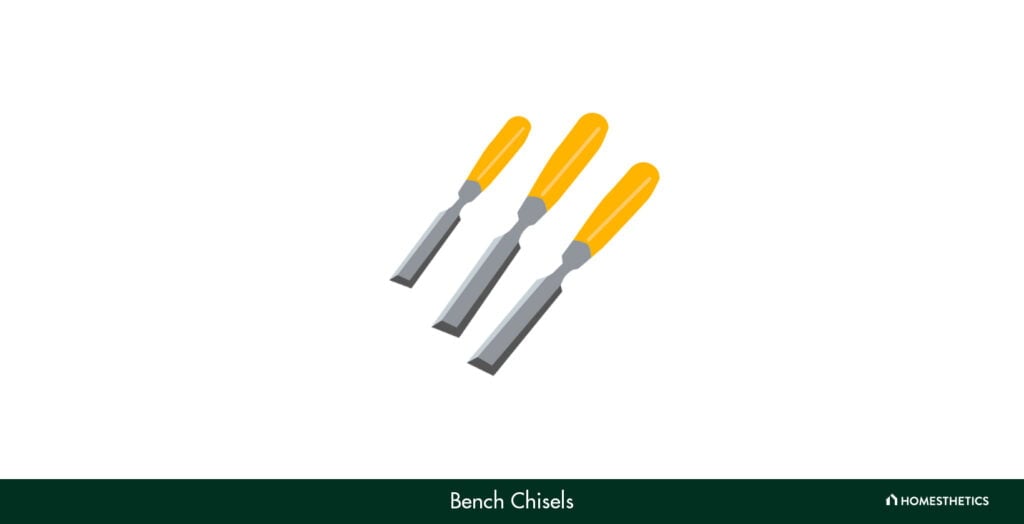
Given their multipurpose features, these are one of the most essential woodworking tools. Bench chisels sit on top of the bench and are used for paring or chopping wood.
I found several bench chisels available in varying shapes, including registered, firm, and bevel-edged. For using the chisel, you must also have a universal woodworking hammer to push the sharp edge of the metal blade onto the surface, which helps cut or shape the wood.
12. Router Table
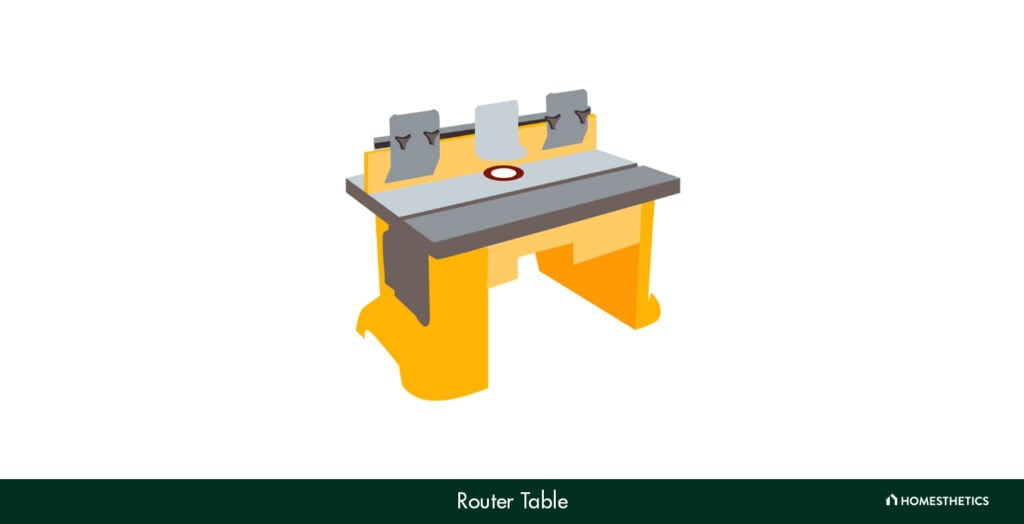
One of the most sought-after cutting tools is the handheld router, which you can use with a router table to cut straight lines. In other words, router tables enhance versatility and guarantee stability, especially when working with wooden pieces of different sizes.
Depending on your specific needs, you can choose from a freestanding router table or a benchtop model. Moreover, it is the go-to tool for beginner woodworkers since it’s safer and easier to use.
13. Belt Sanders
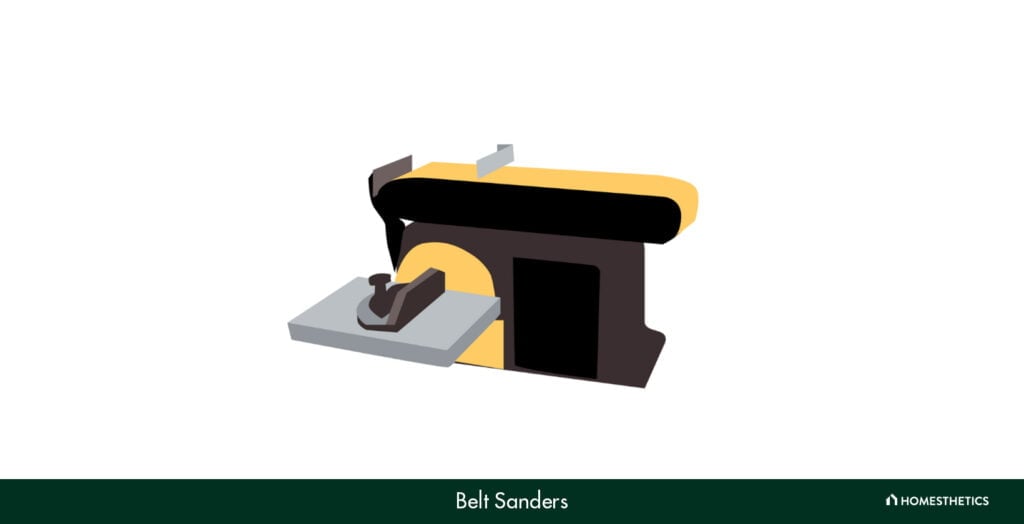
If you are looking for a multipurpose woodworking hand tool, I suggest using a belt sander. These fantastic tools are ideal for trimming along a scribed line, leveling surfaces such as a replacement board over a hardwood floor, sanding rough surfaces, shaping, and freehand rounding.
The best part about belt sanders is that they are highly powerful, helping remove wood quickly and dealing with coarse grits. Such units are fitted with an electric motor and turn 2 drums fitted with sandpaper to get the desired finish on a wooden surface.
14. Dust Collection System
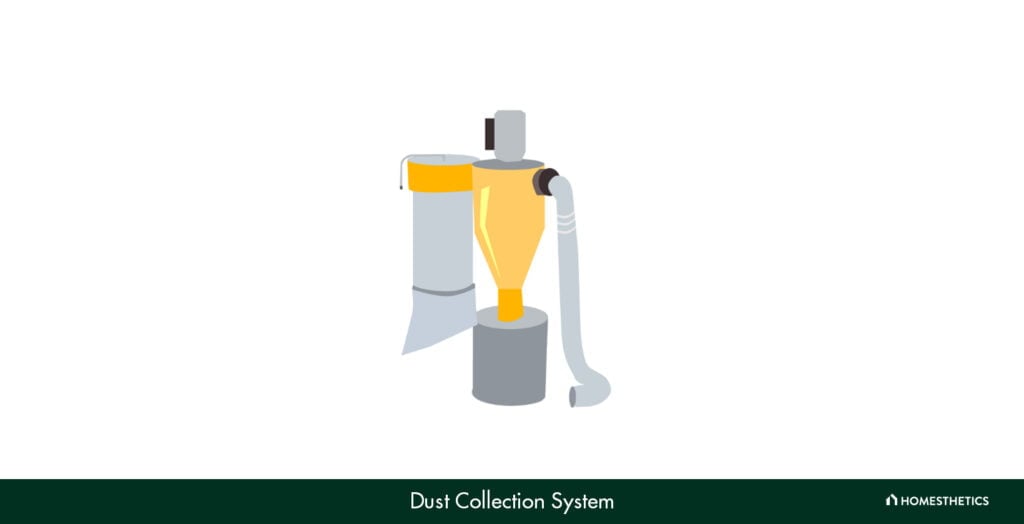
This is one of the more simple tools and helps reduce the dust in the workshop. Depending on the project and the type of power tools you are using, it would be best to get an appropriate dust collection system.
You can use a shop vac dust collection system with small power tools, such as orbital sanders or table routers. But for larger tools, you must use a larger dust collector for safety, cleanliness, and maintaining the workspace and equipment in top condition.
15. Compound Miter
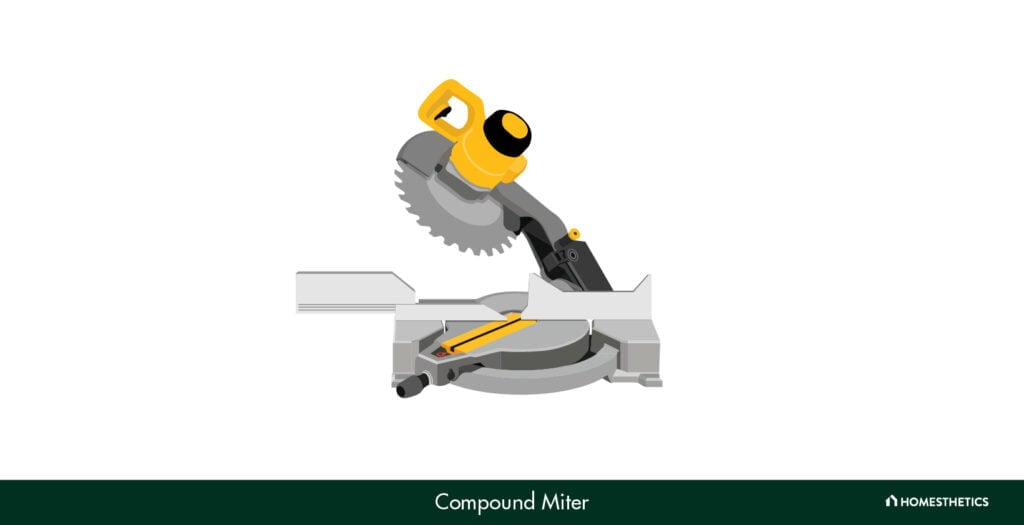
You can make accurate bevel cuts, miter cuts, or both simultaneously with a compound miter saw. Moreover, with a compound miter, you can square cut the edges of boards to ensure the wood pieces are of uniform length.
In most cases, a compound miter is suitable for crown molding and ensures you can cut the width and length of the board at angles other than 90 degrees. Some of the common applications of a compound miter are –
- Customizing picture frames
- Wainscoting walls
- Building wooden planters
- Trimming plain cabinets
- Building a serving tray
16. Rabbet Planes

You can trim or cut rabbets in a step-like design with rabbet planes. Thanks to these planes, you can cut step-like grooves into the surface of the wooden material, specifically the edge, to build a rabbet joint.
After spending time with the product, I assure you it forms a clean groove within the wood, even helping you get a clean and gap-free fit by smoothing or trimming existing rabbet joints. These are simple but quality tools and usually come with an 18mm blade.
17. Combination Square
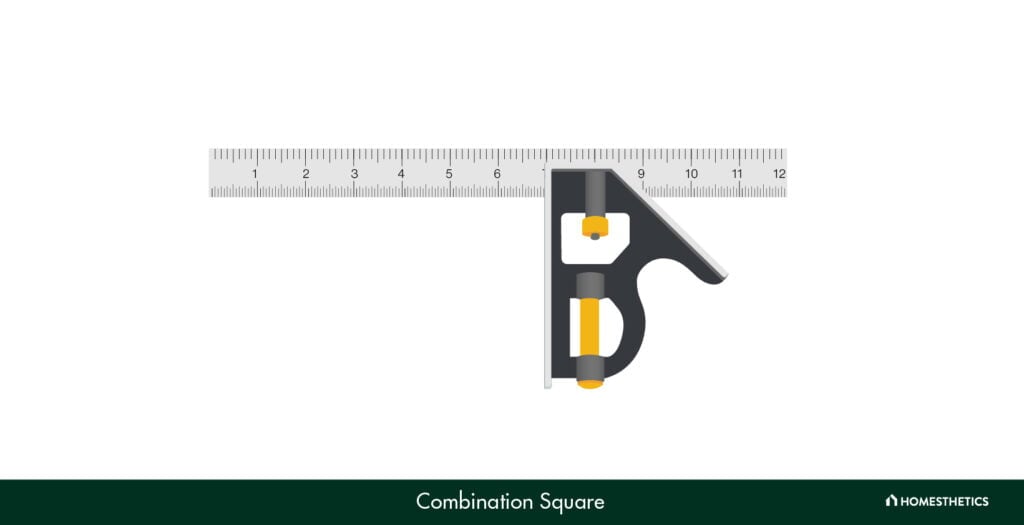
Among its many uses, a combination square can be used as a straight edge, marking device, try square, miter square, rule, plumb, and for measuring outside or inside angles. I use a combination square to measure the depth and length or check 45-degree and square angles.
Moreover, the best units come with a bubble level that helps determine the level and plumb of the surface. Thanks to its multipurpose application, beginner woodworkers and professionals can use it in metalworking and stonemasonry projects.
18. Clamps
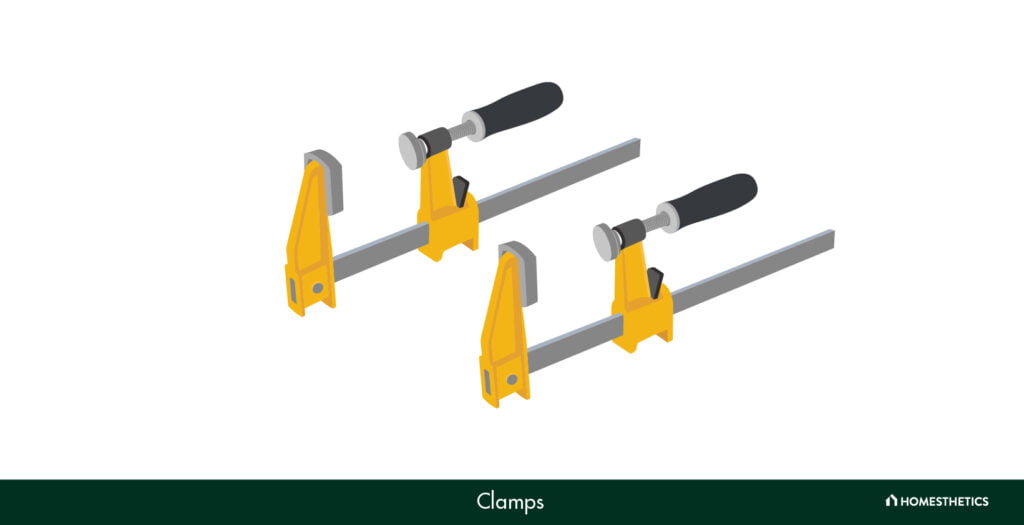
Clamps are another essential woodworking tool, as they help secure panel glue-ups and wood. Most woodworkers use them since they are available in multiple sizes and help deal with different types of tasks.
Because clamps securely hold the wood in place, you can use them to achieve greater precision when welding, carpentry, metalworking, construction, or making your own furniture. The most common of all the clamps are parallel jaw clamps to achieve a flat surface when working on doors or panels.
19. Mallet
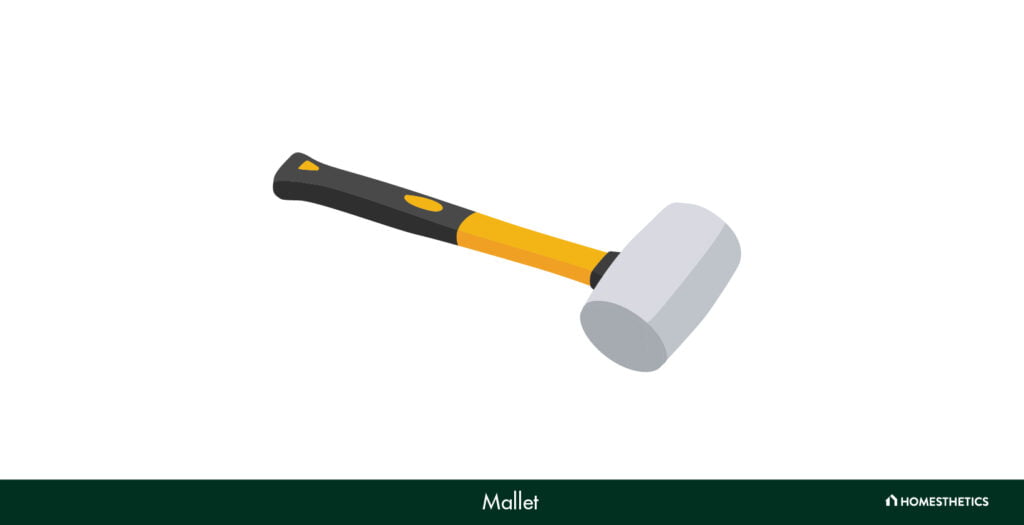
The mallet is an important tool to drive different wood pieces together for carpentry and woodworking projects. More specifically, I use a wooden mallet for working with chisels, hammering dowels, or assembling a dovetail joint.
You will find that a mallet looks like a hammer. Instead, the head is made of materials like wood, leather, lead, copper, etc. Sometimes, working with a metal hammer will damage chisel ends or wood surfaces, but using a wood mallet protects the surface and other tools.
20. Sharpening Stones
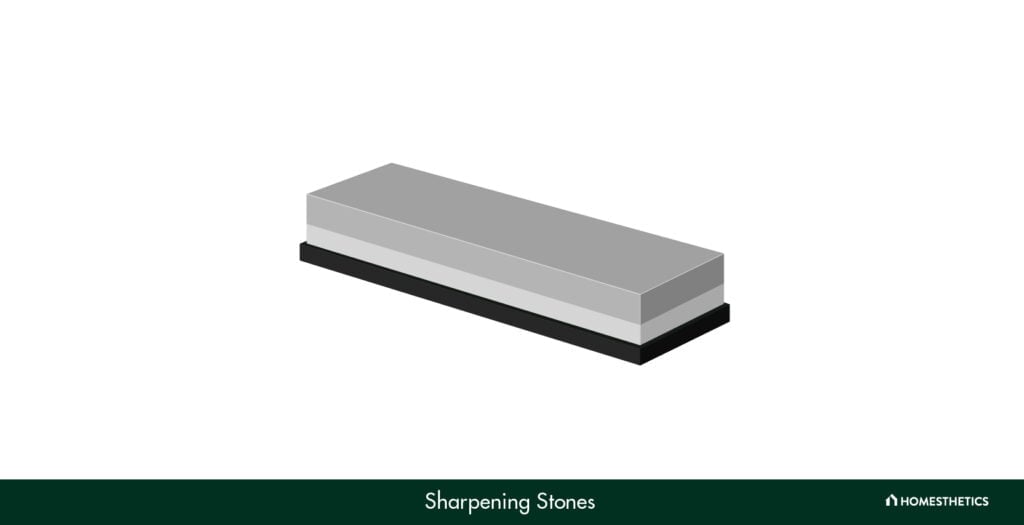
Sharpening stones, also called whetstones, are man-made tools that keep other tools sharp. You can use a sharpening stone to sharpen knives and tools with sharp edges by honing and grinding.
For woodworking, you must polish the sharpened edge, which makes it suitable to use a finer stone or 4000-grit finish stone. In most cases, you can use 2 stones for regular tool sharpening, choosing from 800, 1,000, 1,200, 6,000, or 8,000 grit stones.
You can use a 150 or 250-grit stone to repair damaged edges when it comes to aggressive sharpening.
21. Smoothing Plane
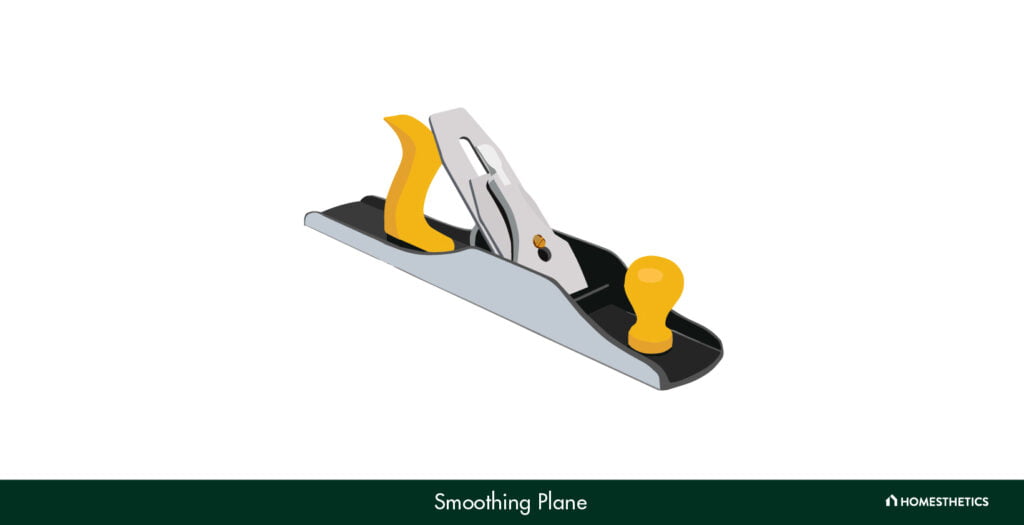
An innovation of the bench plane is a smoothing plane, which requires manual effort to push the blade over the surface of the wood. It’s a type of hand plane, with the cutting blade reducing the thickness of the material to deliver a well-shaped and smooth piece.
The smoothing plane is used last on a wood surface, helping remove the fine shavings to achieve a smooth texture. Once you learn how to use it with precision, the final finish is similar to sandpaper or even better.
22. Files
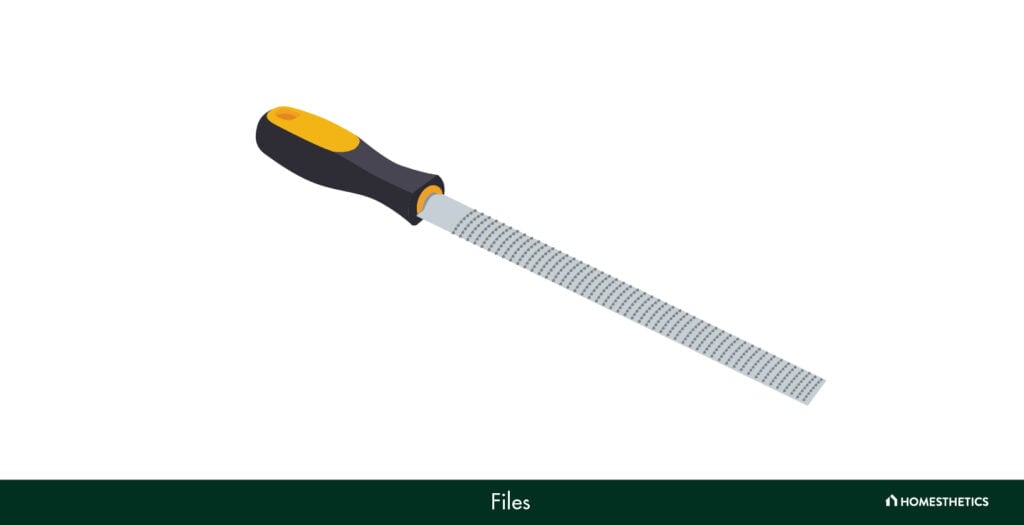
Other than a smoothing plane, you can use a file tool to remove fine material from the surface of the wood. Apart from woodworking, files prove their worth on metalworking projects or simply hobby tasks.
You can choose from different types of hand files, including single-cut, flat, double-cut, round, bent-cut, square, three-sided, and grate files. Note that files are highly versatile tools, useful for grinding and sawing during material removal, which makes them ideal for deburring.
23. Hammer
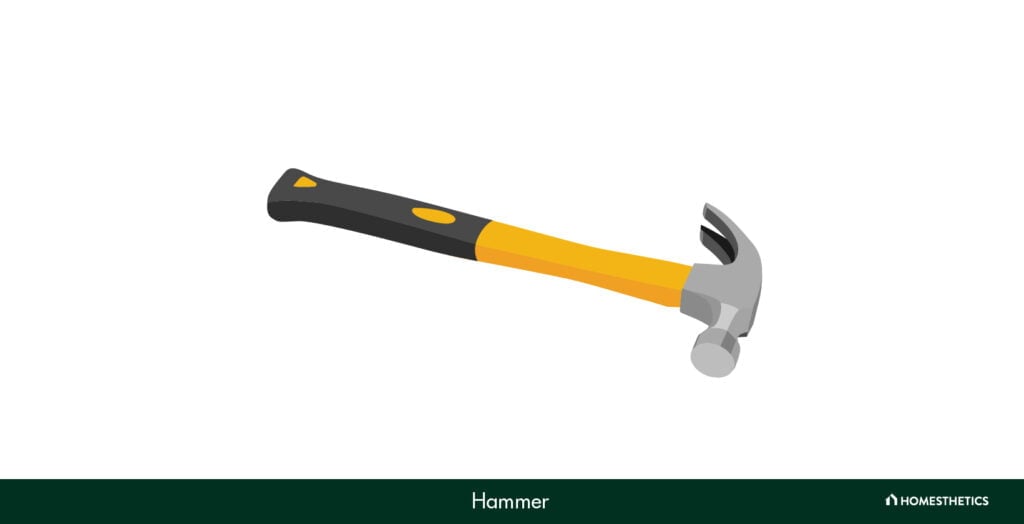
Much like any other hammer, a woodworking hammer drives nails and chisels into a wooden surface. Framing and claw hammers are mostly used as woodworking tools and come with a round head.
But the versatile part is the claw head that allows you to split wood, pry stuff from the surface, perform demolition tasks, and tear drywall. The claw art is curved or straight for claw hammers and frame hammers, respectively.
I have also used these hammers for driving or adjusting different parts.
24. Screw Gun
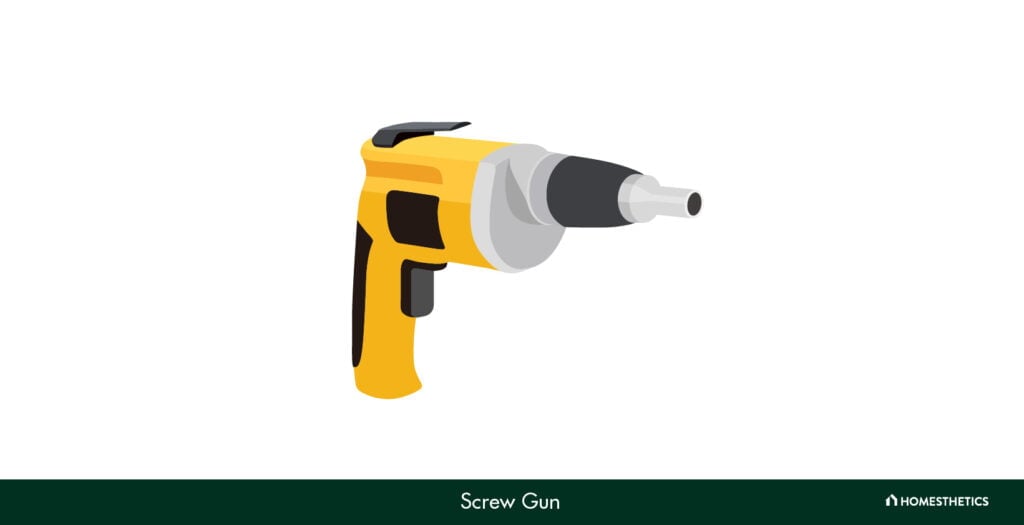
The next tool is a screw gun, which is a handheld power tool that drives screws into different materials, like metal or wood. Apart from woodworking, you can use a screw gun for DIY tasks and construction projects.
You can equip the screw gun with an extension to secure the decking and subflooring if needed. This will allow you to build drywalls, permit metal-to-metal work, and create concrete structures.
Best of all, the screws for the screw guns are available as collated strips for easy loading, thanks to their self-feeding nature.
25. Workbench
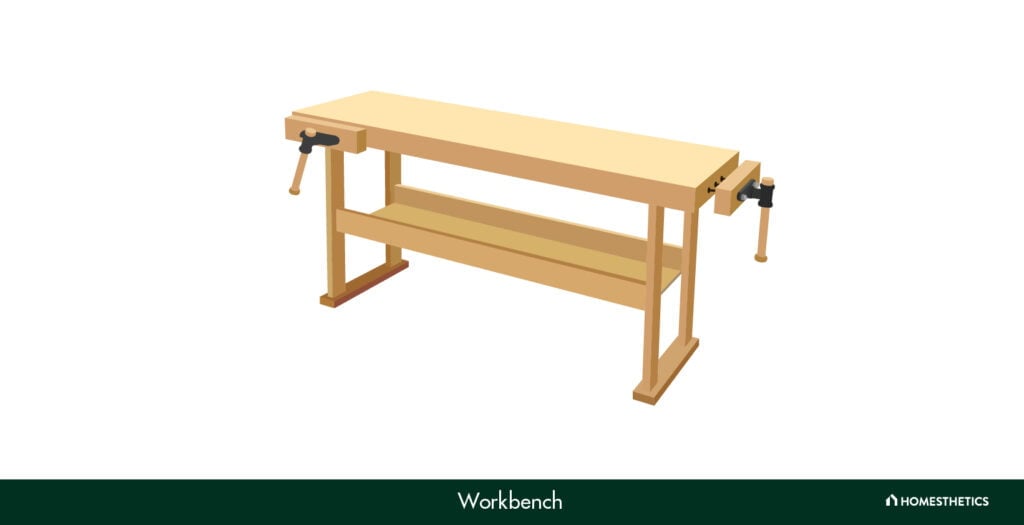
A workbench is a special bench that woodworkers use for stability and getting the desired cut on wooden materials. You get a smooth and flat surface for holding the material, and it’s available in several styles.
After closely examining the product, I know it’s possible to choose a workbench of the correct size based on the project type and material length. In most cases, woodworkers prefer to use a large bench since it can withstand the weight of heavy materials, unlike a small product.
26. Jointer
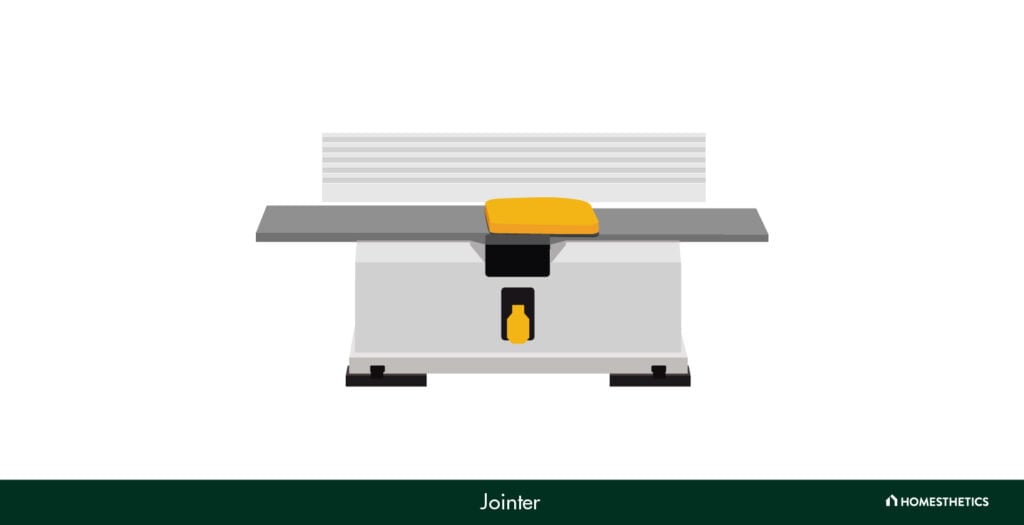
When working with a lumber board, it can be challenging to flatten, square, or smoothen the edges of the material. In such instances, it would be best to use a jointer, which can perform the same tasks with greater precision and reduced effort.
This machine corrects defects on the surface of the material, like cupping or warping. It has great application in cabinetry and furniture projects, readying the edges of the board for fastening or gluing.
You can use manual or mechanical jointers, depending on your convenience.
27. Sandpaper
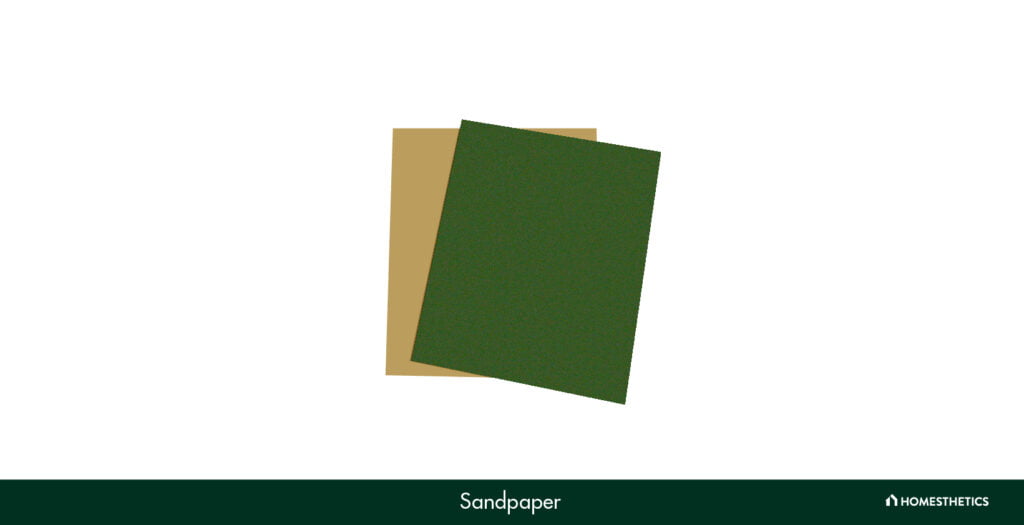
Sandpaper is mostly used for honing and shaping different materials, like sharpening woodworking tools, such as gouges, chisels, knives, block planers, and planer blades. You can also sandpaper on painted surfaces to smooth the surface between 2 coats.
Usually, the lower the grit value of a sandpaper, the coarser the particles are likely to be. Professionals mostly use sandpaper on tough surfaces for stripping, heavy sanding, and cutting to prepare the material.
Depending on the wood, you can use very fine grain, fine grain, or medium grain sandpaper for most tasks.
28. Marking Gauge
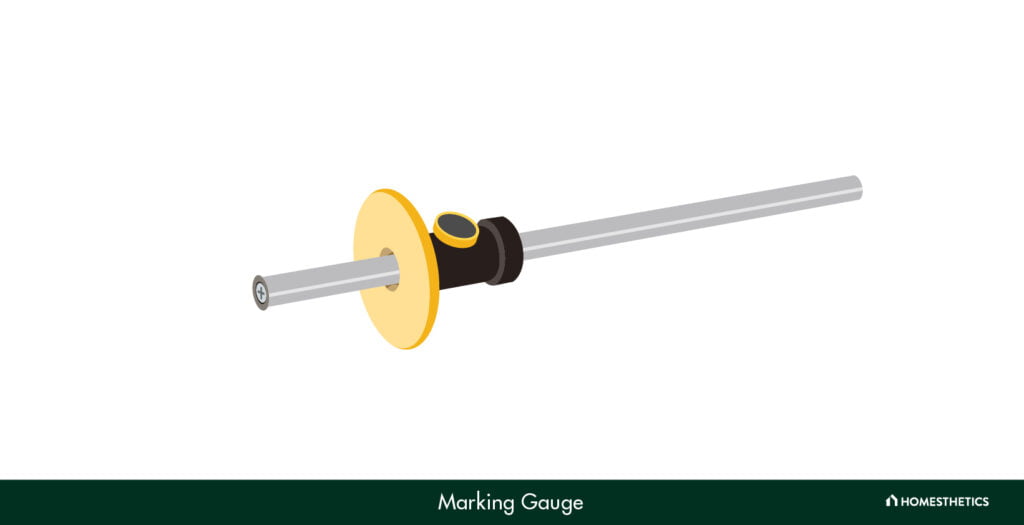
A marking gauge or scratch gauge is primarily used in metal or woodworking tasks to establish clear lines on the surface. This makes it easier to achieve the desired cut for various types of projects.
With a gauge, you can mark a line that’s parallel to the surface or reference edge, which makes it ideal for joinery and sheet metal projects. The best part is that the marking line doesn’t damage the surface or broaden for accurate results.
It’s a fine line that reduces the chances of splintering when using chisels or applying saw cuts.
29. Lathe

When you need to shape wooden materials into a cylinder, use wood-turning lathes. You can make furniture legs, baseball bats, lamp posts, bowls, and several other ornaments with a lathe.
Along with woodworking, lathes find application in metalworking, thermal spraying, metal spinning, glassworking, and reclamation, which shows their versatility. While trying it out in person, I have seen 2 types of lathes – manual-feed and automatic-feed products.
You can also choose the material of the lathe, be it oak, riven lathe, chestnut, or hand-split timber. Among these, the hand-split timer has a large surface area and greater durability.
30. Drill and Driver Combo
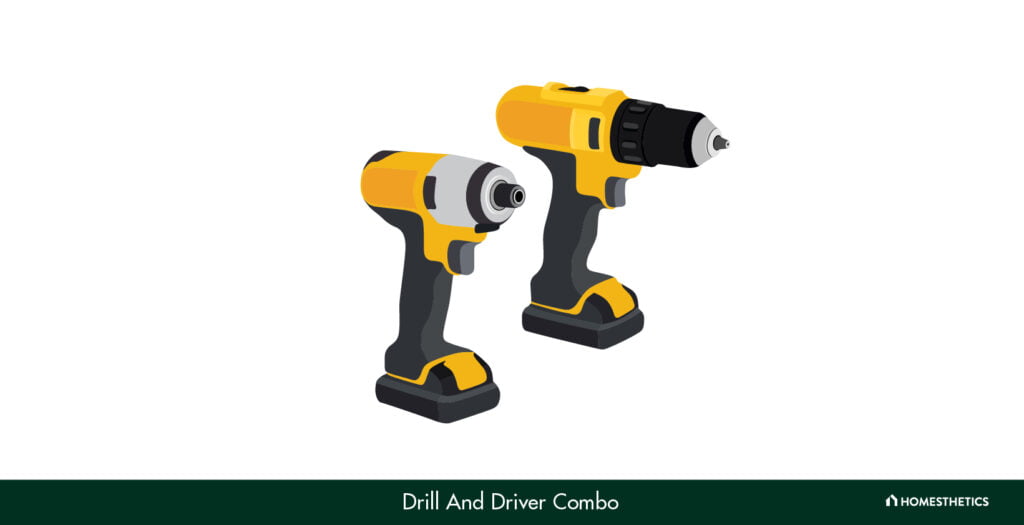
For effective woodworking, you can sometimes use 2 tools together, like a combination of a drill and a driver. Drills help drill the holes into the surface, while a driver drives the screws into the newly formed hole.
Apart from wood, you can work on laminates, plastic, concrete, masonry, and steel. So, why should you use a combination instead of the two units separately? It offers greater convenience and increased efficiency when working on maintenance, home repairs, or building projects involving wood, metal, or ceramics.
31. Steel or Folding Rule

Instead of using 2 rulers, you can use a folding or steel ruler to measure large and small spaces. The best part is that the folding units are highly portable, and you can fold them after completing the project to put them in your toolbox.
After giving it a go, I found the sleek design of a folding or steel ruler ideal for taking measurements of points in hard-to-reach spaces. But apart from accurate measurements, you can use the rulers for drawing lines and making cuts if they are sturdy.
Moreover, thin and flexible rulers are ideal for measuring cambered and rounded surfaces.
32. Wood Glue
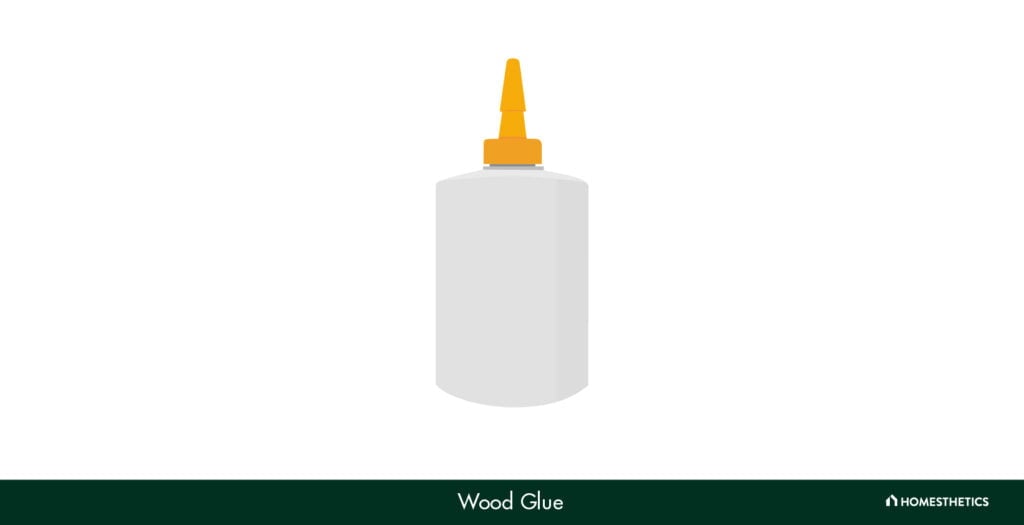
A highly underrated woodworking tool for various projects is the wood glue that helps join different pieces of wood. You can save money by using wood glue rather than an expensive adhesive, especially since it allows you to attach multiple boards when constructing furniture, like tabletops.
However, for plastic joints, you must reinforce the structure with a nail or screws to prevent it from falling apart. You can use 5 different types of wood glue for most woodworking tasks, including –
- PVA glue
- Cyanoacrylate glue
- Polyurethane glue
- Hide glue
- Epoxy
33. Mineral Spirits

A handy woodworking tool that people often forget about is mineral spirits. After working with power tools, like miter saws or table saws, you will likely end up with a dirty workstation.
Mineral spirits are great for removing tough stains from the surface, preparing the wood for staining, revealing the natural grain of the wood, and helping shine dull wood. This helps you get the desired finish on most materials and is easy to use.
Just dab the cloth with the mineral spirit and gently scrub over the stained portion of the wood to get a clean finish.
34. Hearing Protection

The last 2 options on this list don’t specifically come under essential woodworking tools, but they are essential accessories nonetheless. You must wear protective equipment while woodworking to avoid injuries since the external sound of the equipment is quite high.
This helps keep the ears safe and reduces the chances of hearing loss due to excessive noise. With proper hearing protection, you can reduce the decibel levels reaching the inner ear, for which earplugs and earmuffs prove the most effective.
After getting a feel for hearing protection equipment, I found that there are 5 types –
- Canal caps
- Expandable foam plugs
- Reusable and pre-molded plugs
- Miscellaneous devices
- Earmuffs
35. Dust Mask
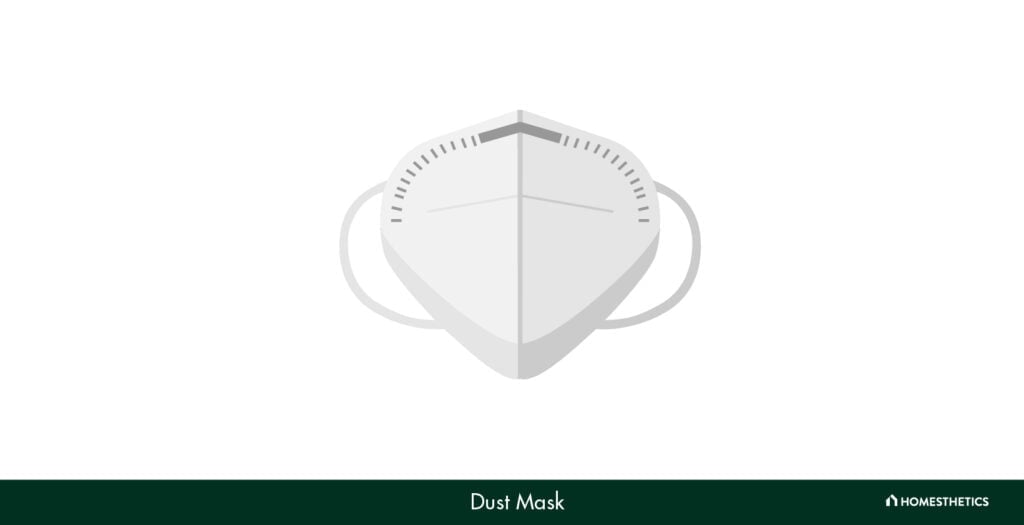
Just like ear protection, you must wear a dust mask in the workshop. As I have experienced first-hand, using woodworking tools creates a lot of debris and dust, which can go into your eyes, resulting in injuries.
Also, people with dust allergies will struggle in the workshop to get anything done, but with a mask, you can protect the lungs by preventing the inhalation of dust. Modern masks even come with goggles to protect your eyes and work by allowing clean your pass-through while trapping debris on the outside.
For a dust mask to be effective, it must sit on the face properly to form a tight fit.
How can I maintain my woodworking tools in good condition?
To maintain your woodworking tools so that they are always in good condition, you should do the following:
- Regular cleaning
- Proper storage
- Prevent rusting
- Use the right tools depending on the job
- Disassemble the tools after working
- Sharpen the blades
How do I clean woodworking tools?
To clean woodworking tools, you can start by wiping away any sawdust or debris using a clean cloth. For stubborn residue, use a mild solution of dish soap and warm water to gently scrub the surfaces. Make sure to dry the tools thoroughly before storing them to prevent rusting.
What are the risks associated with woodworking?
Several risks associated with woodworking are:
- Wood dust can cause asthma
- Debris can get in the eye
- Loud noise can affect your hearing
- Skin damage from sap and wood lichens
- Respiratory tract infection
What are the safety precautions to take while woodworking?
Several safety precautions to take while woodworking include:
- Wearing proper clothing
- Using PPE (Personal Protective Equipment)
- Keeping the work area clean and tidy
- Learning about new safety precautions
- Sharpening the blades and bits
- Never hesitate to ask for help
- Minimize distractions in the workshop
- Using compatible power outlets
- Use just one extension cord at a time
What is the highest designation in woodworking?
The highest designation in woodworking or carpentry is that of a master carpenter. This is bestowed on someone with the necessary skills, experience, and training to handle various carpentry tasks. They must also be adept at using modern tools, following proper guidelines, and completing projects on time.
There you have it! A detailed list of the essential woodworking tools you can’t do without, whether performing DIY tasks or working on professional projects. Many of these tools are handheld and require manual force to achieve the desired results, while other models are electric-powered and easy to use.
But whatever the task, you must wear protective gear and carry our proper maintenance to keep the tools in good condition. And if you don’t get the desired results initially, don’t be disheartened. It took me some time to master the skill of using different tools, so keep learning and experimenting until you succeed!
